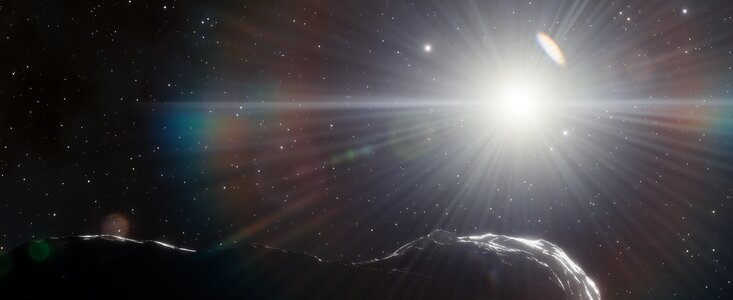A team of researchers have spotted three massive asteroids that have been hiding undetected in the Sun’s glare, one of which is the largest object that could potentially pose a risk to our planet to be spotted in the past eight years.

An announcement of the findings appeared Monday in The Astronomical Journal, detailing three near-Earth asteroids (NEA) that were found using a Dark Energy Camera in Chile.
Scott Sheppard, an astronomer at the Earth and Planets Laboratory of the Carnegie Institution for Science and the paper’s lead author, said in a release that two of the NEAs span approximately one kilometre in width — a size that could potentially amount to a “planet killer.”

Space cameras are notoriously bad at capturing deep-field images of objects that are impacted by the Sun’s glare and atmospheric distortions. In this instance, scientists pointed the camera close to the Earth’s horizon during twilight as a combat.
Sheppard says the Earth is safe, for now, as none of the asteroids’ orbits directly line up to threaten a collision with Earth at the moment.

Get breaking National news
However, that could change.
One asteroid, in particular, called 2022 AP7, is 1.5 kilometres wide and has an orbit that could one day cross Earth’s path, but it’s hard for scientists to predict if, and when, that would happen.
A NEA measuring one kilometre or larger “would have a devastating impact on life as we know it,” Sheppard told CNN.
“It would be a mass extinction event like hasn’t been seen on Earth in millions of years,” he said.
In September, NASA charted a spacecraft to smash into a far-off asteroid, in the first-ever attempt to deflect and redirect a space rock.
The experiment, which saw the DART spacecraft collide with an asteroid named Dimorphos, was considered a success in planetary defence, and slightly altered Dimorphos’ orbital trajectory. The experiment’s success means astronomers can now develop an even more robust planetary defence strategy.
Scientists have previously said they believe there are approximately 1,000 near-Earth objects (NEO) that measure larger than one kilometre in size and that they’ve been able to spot about 95 per cent of them.
NASA defines NEOs as space matter like asteroids and comets that orbit within 48.3 million kilometres from Earth. NASA and other space organizations are constantly monitoring for these threats.
It’s quite challenging for Earth’s telescopes to spot space rocks that move within the inner solar system — an area that includes Mars, Earth, Venus and Mercury — because of the Sun’s harsh glare. And it’s impossible for space-based telescopes like the James Webb and Hubble to observe the inner solar system, as the Sun’s heat and light could destroy their instruments.
Hence the importance of telescopes like the Dark Energy Camera.
“Large areas of sky are required because the inner asteroids are rare, and deep images are needed because asteroids are faint and you are fighting the bright twilight sky near the sun as well as the distorting effect of Earth’s atmosphere,” Sheppard said in the release.
“DECam can cover large areas of sky to depths not achievable on smaller telescopes, allowing us to go deeper, cover more sky, and probe the inner Solar System in ways never done before.”











Comments